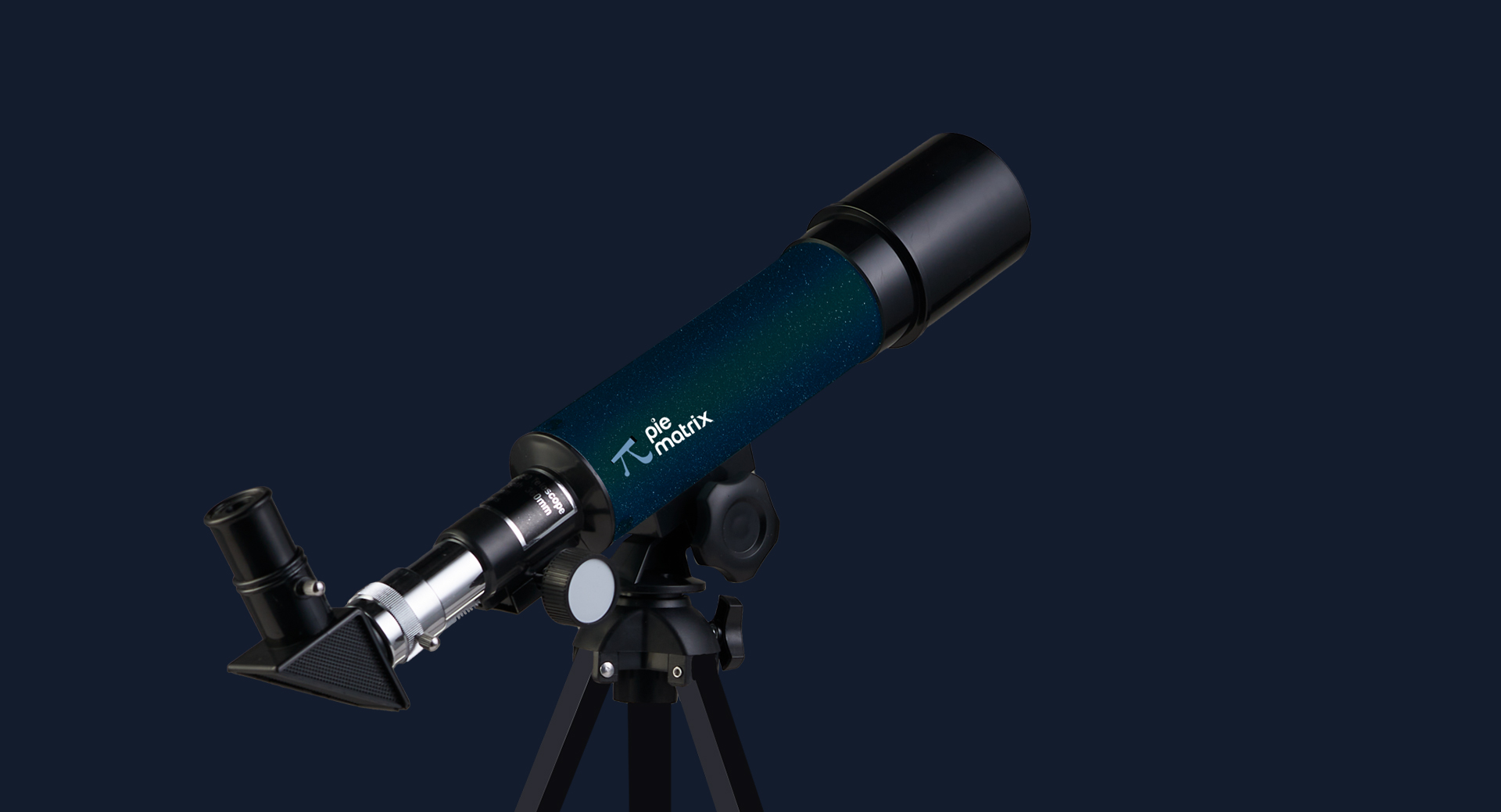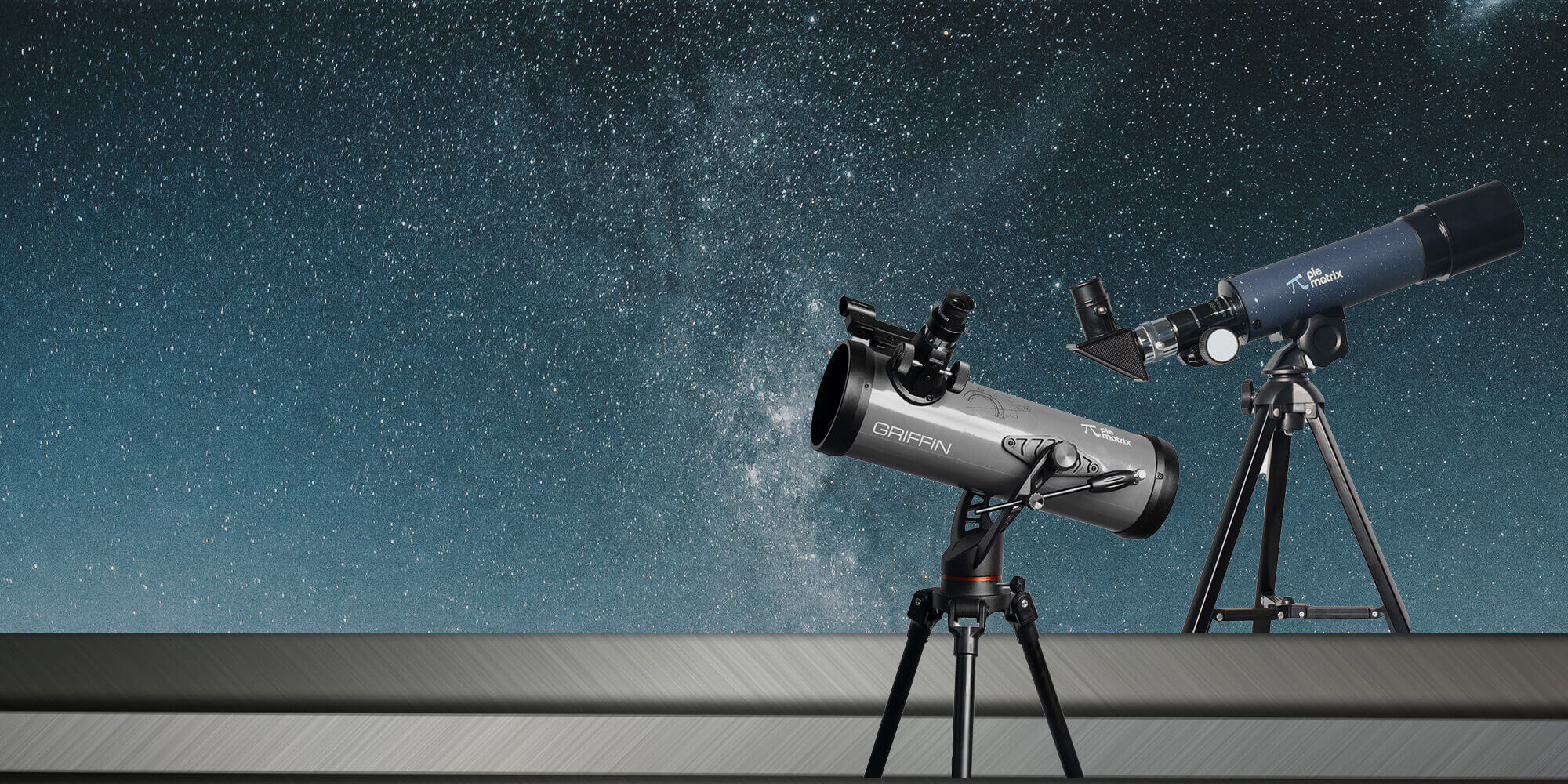How to Choose Your First Telescope
November 2022

Think of buying your very first telescope. When you initially start your search, there are many options to consider, which can be daunting. It’s simple to be swept up in the thrill of a new telescope and neglect to consider how useful it will be for your way of life. But it will be much simpler to choose the best telescope for your use if you have a fundamental grasp of the various telescope sizes, kinds, and mounts.
Unravel the secrets with your first telescope
A telescope may be a window into the cosmos and bring a lifetime of pleasure. However, there isn’t one “ideal” telescope as different telescopes serve different purposes. Instead, consider your viewing preferences, lifestyle, and wallet when picking a telescope.
To aid you in making sense of the “universe”, you can choose different telescope models depending on your expertise and curiosity. When searching the market for your new telescope, you’ll be well-equipped with a solid understanding of the few fundamental varieties of telescopes. Choose the appropriate option for you!
Two features are necessary for the telescope you want: excellent optics and a stable, well-functioning mount. In addition, as we’ll see below, large scopes are more useful and reveal more information than smaller ones, everything else being equal. The best scope for you is the one you’ll use, so don’t ignore portability and ease.
Size of the lens
When selecting your first telescope, the aperture—or the diameter of its primary mirror or lens—should be your priority. As a telescope’s diameter increases, it aids in observing distant objects and provides more information about planetary objects like the Moon. Telescopes with an aperture of 4 or 5 inches should be able to see the planets, the Moon, and the moons of Jupiter. With a scope this narrow, viewing Neptune and Uranus might be challenging, but it’s not impossible. For a beginner, the first telescope of this size is a decent place to start.
If you want to take your stargazing to the next level and view fainter deep-sky phenomena like star clusters, galaxies, and nebulae, you’ll need something bigger than 4 or 5 inches. However, it would help if you thought about how convenient it would be to use a telescope regularly before buying the biggest telescope so you can afford to view more things. Will it be worth your effort to lug it into the backyard whenever you need it? Are you comfortable bringing it to your preferred secluded spot or a stargazing event? Do you want anything that young children can utilize for it?
Magnification
Despite the constant emphasis on magnification, a telescope’s aperture is more important. If you have multiple eyepieces, you can adjust the telescope’s magnification since it relies on both the focal length of the telescope and the eyepiece you’re using.
But even with high magnification, the aperture controls how much information you can see. Because your telescope can’t gather enough light to allow you to see any more detail, using a tiny telescope with a high magnification will only allow you to enlarge an unclear image.
When getting yourself a first telescope, consider optical quality and a secure mount that will make it simple to move the scope throughout the sky. Before purchasing a telescope, it is essential to test it out. You may do this by attending an astronomy club in your area.
Refractor telescope, Neo 50360
This is a superb telescope, great for beginners who are curious to learn about stars in the night sky and geographical land-based studies. NEO 50360 is exceptionally child-friendly and travel-friendly because of its low weight and simple no-tool assembly. This telescope has completely coated lenses, which make the pictures easier to see. This gadget has two eyepiece lenses. You should make the greatest use of the lens that best matches your needs. A wonderful present for a beginner, it provides views of Jupiter’s moon, the lunar craters, and more.
First Telescope Setup
When you initially set up your first telescope, you should do so indoors during the day. That will give you a warm, well-lit atmosphere to assemble all the parts, read the instructions, and address any issues. Check the alignment of the spotting scope with your primary telescope before taking it outside; failing to do so will make it difficult to see anything in the sky. Having an expert guide you through that phase might be useful.
Final Thoughts
We Pie Matrix are one of the most innovative and progressive companies in the market. We are well-known for our innovative telescopic designs and have made several advancements over the years that have made amateur astronomy simpler and more entertaining than ever. Our team will assist you in pursuing your observational astronomy with your first telescope online India and help other academic or scientific groups spread the word about and advance the study of astronomy as both an art and a science.

Buy Telescope in Delhi from Pie Matrix




